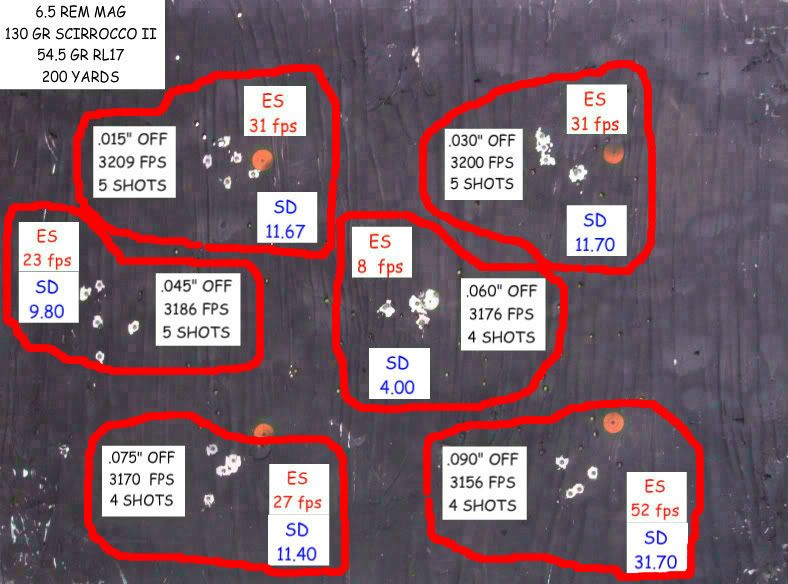.300winmag
Handloader
- Oct 17, 2011
- 660
- 2
As most of you know, I acquired a 6mm BR within the last month. However, I have now gone through my 100 pieces of Lapua brass I bought new. I have a bushing neck sizing die and have bought 3 bushings to go with it. I have a no turn 0.271 neck in my chamber, and with new Lapua Brass, I have loaded case necks that measure 0.270". Which is snug but performing well. I initially started with the 0.267 sizing die and groups opened up at 100 yards. I could also feel a great deal of difference between new cases versus the resized cases. The new cases had a great deal more resistance while seating bullets. Thus, I switched to a tighter neck, I went to the 0.266 bushing. Tension felt about the same with this die as it did with new cases; so I thought it was good to go. I shot several groups at 100 yards in the neighborhood of 0.140 inches, which is what I had gotten with new brass. However, I stretched it out to 513 yards the other day and shot several groups. All groups were within or below 1/2 MOA,, it was calm and ideal conditions and my problem was vertical stringing. I sorted bullets by ogive and weight, and all cases were sorted; then all powder charges were weighed. Finally OAL of cartridges were sorted (all were within 0.001"). I had on the worst group 3" of vertical spread! Windage was within an inch. I am meticulous when it comes to hand loading; I weigh cases, weigh bullets, then measure bullets am and a little confused with these results. I think the issue from my engineering background is the internal stress of the case necks being inconsistent and resulting in inconsistent neck tension of the bullet in the case, or different neck release temperatures based upon the metallurgical composition of the cases, as two will never be the same.
I've never annealed cases, as I've never experienced any real difference with the calibers I shoot. However, with this rifle and loads, I'm seeing the difference, and am wondering if my assumption with neck tension are correct in the vertical stringing and will annealing my cases help mitigate this issue? Maybe I'm asking too much of this cartridge, but I have read article after article of 6mm BR's shooting sub 2" groups at 600 and am bound and determined to get mine to shoot that well.
Thanks in advance!
I've never annealed cases, as I've never experienced any real difference with the calibers I shoot. However, with this rifle and loads, I'm seeing the difference, and am wondering if my assumption with neck tension are correct in the vertical stringing and will annealing my cases help mitigate this issue? Maybe I'm asking too much of this cartridge, but I have read article after article of 6mm BR's shooting sub 2" groups at 600 and am bound and determined to get mine to shoot that well.
Thanks in advance!





